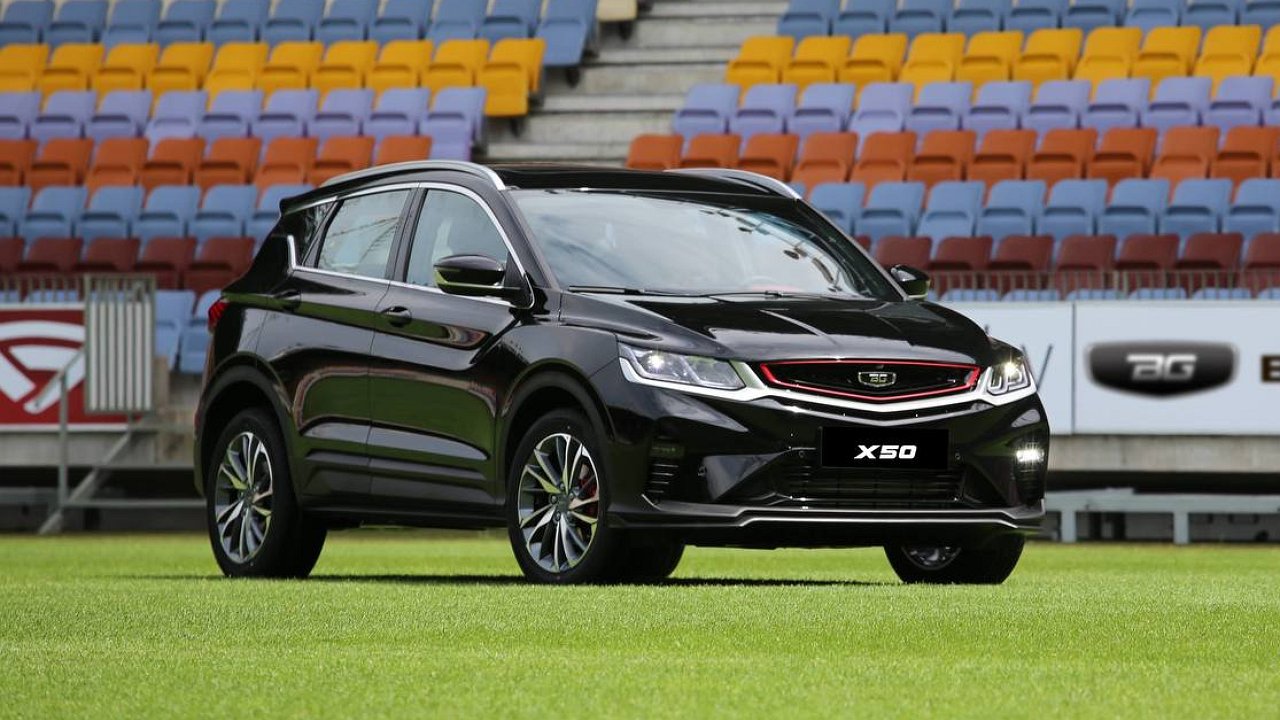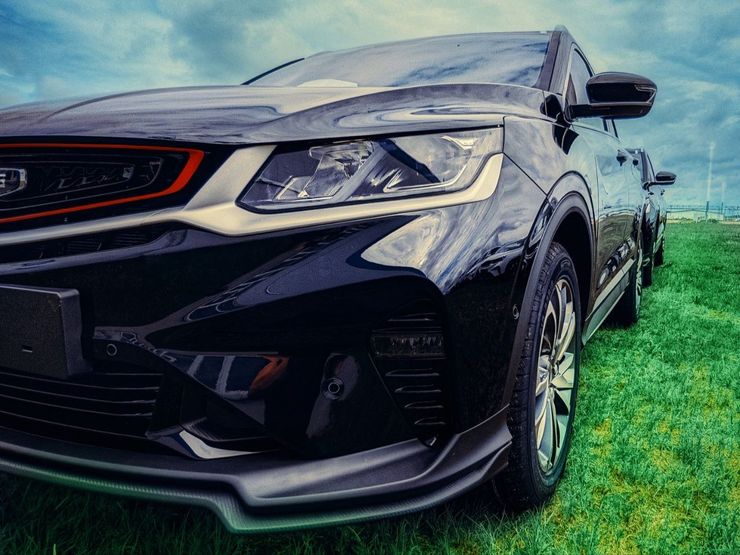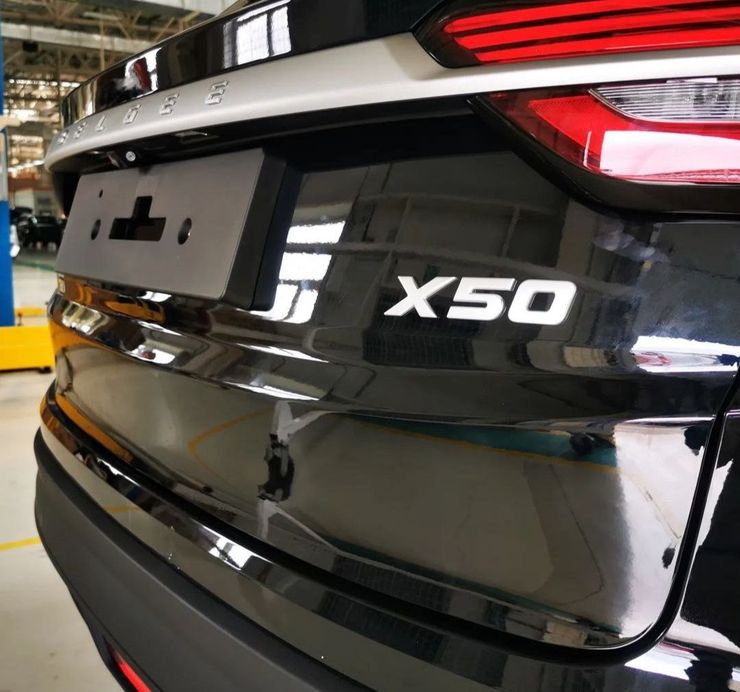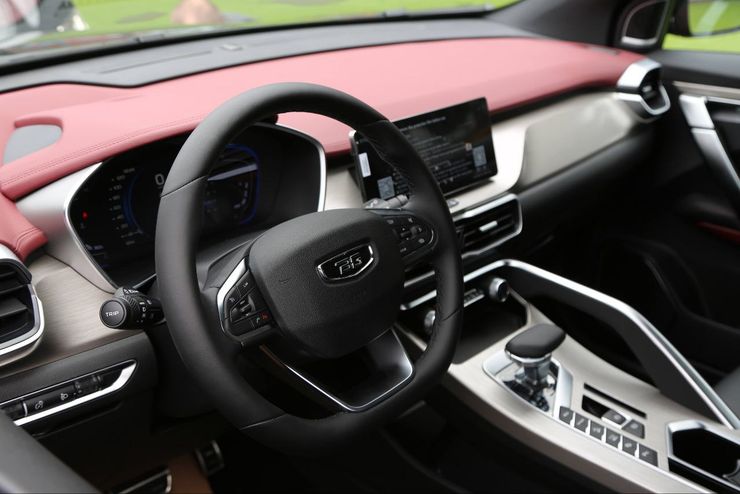Recently, good news came from the BelGee plant – it began to produce Belarusian BelGee X50 crossovers. The cars are already included in the dealer network, from where they will explore the sublunary world. The AvtoVzglyad portal, which in every possible way shared the joy of our friends and Belarusian brothers on this occasion, nevertheless decided to look at the issue a little more broadly.
So, Belarusian dealers have already opened a trade in new cars, on the radiators of which a pentagon with the letters BG shines inside. The management of the factory, a joint Belarusian-Chinese enterprise, will not hide the secret of the birth of their brainchild: it is based on the well-known Geely Coolray.
Badge engineering grimaces
If we stick strictly to the truth, the BelGee X50 is the pure, uncomplicated Coolray of the first generation. The second generation model will also go on sale soon, but under its own Chinese brand – what fool would give away the latest developments without skimming the cream first?
The car is an excellent example of badge engineering, so loved by the bosses of the domestic auto industry. It differs from its prototype only in logos on the front and back, on the windows and on the steering wheel. Oh no, there are some other changes. According to the Belarusian portal ABW.by, which had the opportunity to get to know the car better, the “Belarusian” is hiding under the hood … no, not the original engine at all. How can such a thing be thought? Instead of the usual Chinese Leoch, a battery from the Russian company Akom is hiding.
Bad experience
In other words, the same crayfish, just in a different basket. All nodes are still manufactured in China, from where they are delivered to Belarus, where they are laboriously connected together through simple operations, popularly known as “screwdriver assembly”. There is no localization yet. It is highly doubtful that real production of major auto parts will take place at local locations in the future, although such plans appear to be in the works. In Russia, we have already experienced this – for a decade and a half, our craftsmen have learned to skillfully repack foreign spare parts and pass them off as their own.
But is it generally the same for us how cars are produced in the state of the Union? The main thing is that people should have something to ride, right?
Inner fear?
No not at all. The main objection lies on the surface – technology. If they are ours, no one can take them away from us. And if they are strangers, then we have an example, as they say, on our faces. After the flight of foreign manufacturers, the entire Russian auto industry found itself with a broken trough in an instant.
And how about sterlet, sterlet in a silver saucepan, sterlet in pieces with crayfish tails and fresh caviar? And the egg coconut with mushroom puree in cups? And what about the suppliers who, if well managed, appear in large numbers around major sovereign automotive companies? And what about new jobs, wages, taxes, increasing the purchasing power of the population?
But for some reason we don’t. Why? The American political scientist Dmitry Drobnitsky has his own thoughts on this: “As for the car industry, you know, the eyes are afraid, but the hands are doing. There are no problems creating a car from scratch now – at the current level of technological development of mankind. Again, the most important thing that happens to us is that we pass the point of our inner fear. The greatest fear is within.”
Waiting for a kick
We can agree that the fear of finally tackling the real thing prevents the establishment of the domestic auto industry. You may disagree and rest on the fact that our officials are reluctant to re-arrange financial flows – in their own pockets, of course. But somehow, with all the fancy declarations, the localization is still there. However, what Drobnitsky is undoubtedly right about is that creating a good car for home use is not an impossible task.
Why am I interested in the opinion of not an engineer, not a designer, not a market leader, but a political scientist? Very easy. Production workers, immersed in their professional problems, will immediately begin to whine that this is impossible: there are no technologies, no specialists and no modern equipment. And only politicians who know nothing about pieces of iron can give them a good kick, preventing them from working their way through and solving seemingly impossible tasks. And in our history there are many examples of this.
Everything we lack can eventually be developed, bought, stolen. There would be a desire. And he goes unnoticed.
So, Belarusian dealers have already opened a trade in new cars, on the radiators of which a pentagon with the letters BG shines inside. The management of the factory, a joint Belarusian-Chinese enterprise, will not hide the secret of the birth of their brainchild: it is based on the well-known Geely Coolray.
Badge engineering grimaces
If we stick strictly to the truth, the BelGee X50 is the pure, uncomplicated Coolray of the first generation. The second generation model will also go on sale soon, but under its own Chinese brand – what fool would give away the latest developments without skimming the cream first?
The car is an excellent example of badge engineering, so loved by the bosses of the domestic auto industry. It differs from its prototype only in logos on the front and back, on the windows and on the steering wheel. Oh no, there are some other changes. According to the Belarusian portal ABW.by, which had the opportunity to get to know the car better, the “Belarusian” is hiding under the hood … no, not the original engine at all. How can such a thing be thought? Instead of the usual Chinese Leoch, a battery from the Russian company Akom is hiding.
Bad experience
In other words, the same crayfish, just in a different basket. All nodes are still manufactured in China, from where they are delivered to Belarus, where they are laboriously connected together through simple operations, popularly known as “screwdriver assembly”. There is no localization yet. It is highly doubtful that real production of major auto parts will take place at local locations in the future, although such plans appear to be in the works. In Russia, we have already experienced this – for a decade and a half, our craftsmen have learned to skillfully repack foreign spare parts and pass them off as their own.
But is it generally the same for us how cars are produced in the state of the Union? The main thing is that people should have something to ride, right?
Inner fear?
No not at all. The main objection lies on the surface – technology. If they are ours, no one can take them away from us. And if they are strangers, then we have an example, as they say, on our faces. After the flight of foreign manufacturers, the entire Russian auto industry found itself with a broken trough in an instant.
And how about sterlet, sterlet in a silver saucepan, sterlet in pieces with crayfish tails and fresh caviar? How about egg coconut with mushroom puree in cups? And what about the suppliers who, if well organized, appear in large numbers around large sovereign automotive companies? And what about new jobs, salaries, taxes, increasing the purchasing power of the population?
But for some reason we don’t. Why? American political scientist Dmitry Drobnitsky has his own thoughts on this: “As for the car industry, you know, the eyes are afraid, but the hands are doing. There are no problems creating a car from scratch now – at the current level of technological development of mankind. Again, the most important thing that happens to us is that we pass the point of our inner fear. The greatest fear is inside.”
Waiting for a kick
We can agree that the fear of finally tackling the real thing prevents the establishment of the domestic auto industry. You may disagree and rest on the fact that our officials are reluctant to re-arrange financial flows – in their own pocket, of course. But somehow, with all the fancy declarations, the localization is still there. However, what Drobnitsky is undoubtedly right about is that creating a good car for home use is not an impossible task.
Why am I interested in the opinion of not an engineer, not a designer, not a market leader, but a political scientist? Very easy. Production workers, immersed in their professional problems, will immediately begin to whine that this is impossible: there are no technologies, no specialists and no modern equipment. And only politicians who know nothing about pieces of iron can give them a good kick, preventing them from working their way through and solving seemingly impossible tasks. And in our history there are many examples of this.
Everything we lack can eventually be developed, bought, stolen. There would be a desire. And he goes unnoticed.
Source: Avto Vzglyad
Donald Salinas is an experienced automobile journalist and writer for Div Bracket. He brings his readers the latest news and developments from the world of automobiles, offering a unique and knowledgeable perspective on the latest trends and innovations in the automotive industry.
















